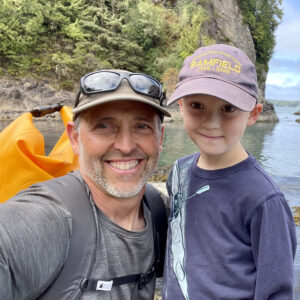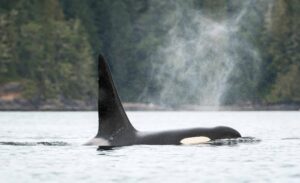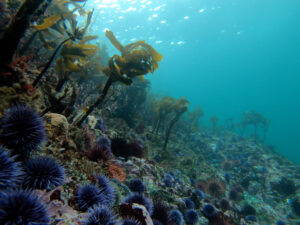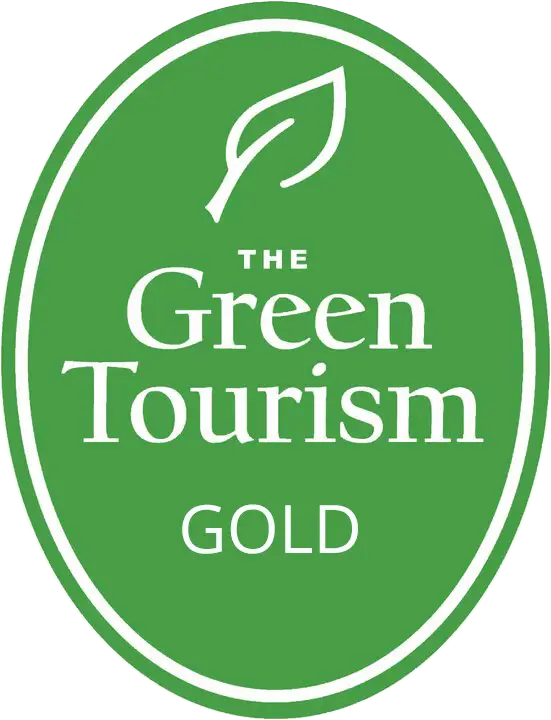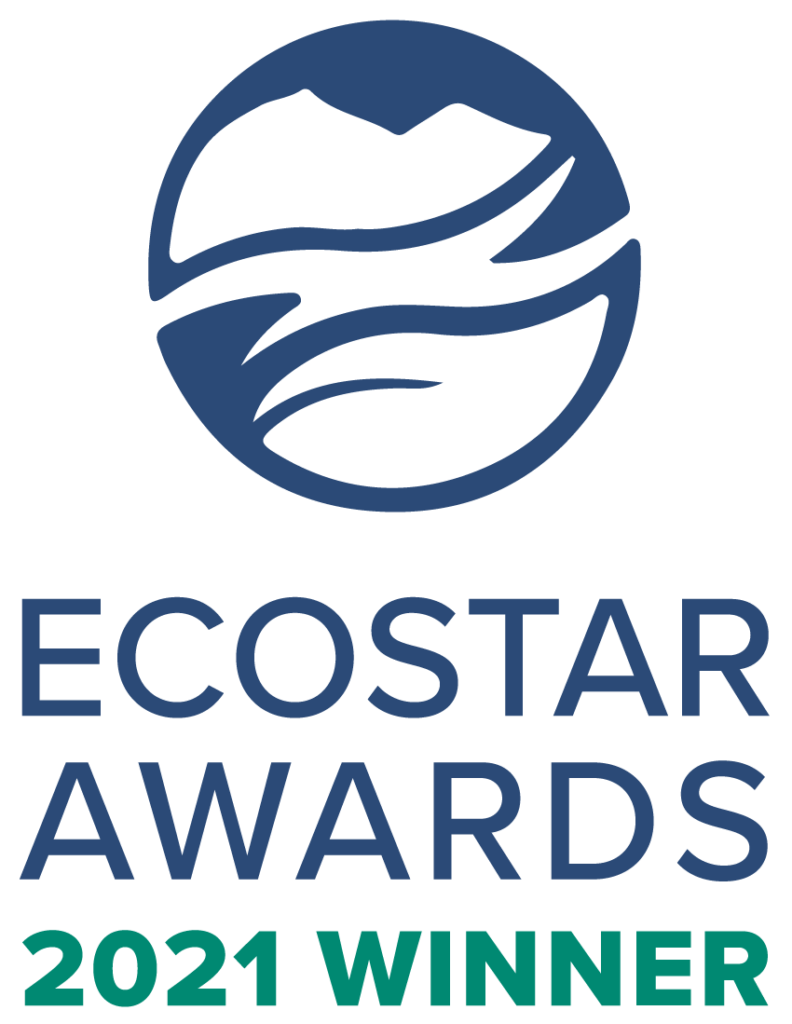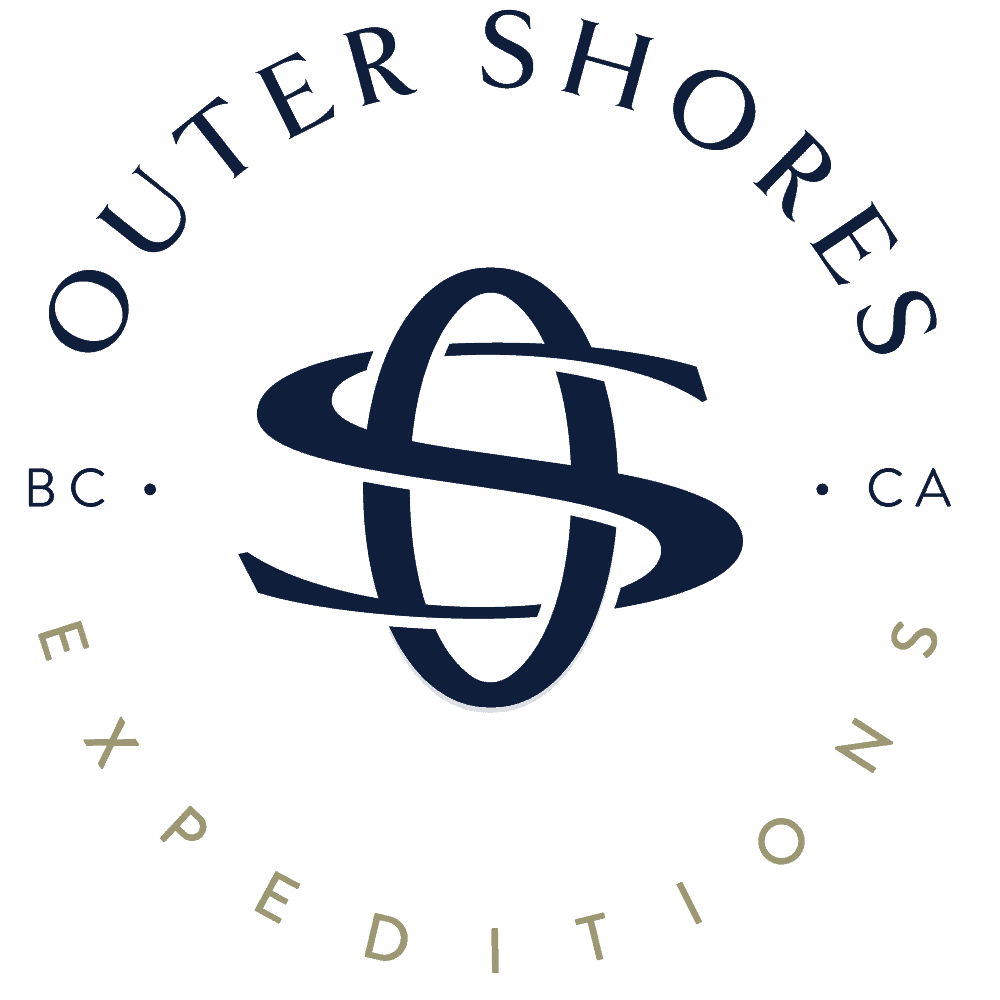If you’ve spent any time out on the BC coast recently you may have noticed something exciting that’s happening – the return of sea otters (Enhydra lutris) after decades of exploitation and decline. Famous for their cute and cuddly appearance, until recently, encountering one of these small marine mammals would have been a rare event, unless you managed to travel to some of the more remote corners of our coast, or further north in Southeast Alaska. However, as sea otter populations continue to increase and expand into areas more frequented by people, sightings are becoming much more common on our coast, including areas around Bamfield, Ucluelet, Tofino, Port Hardy, Port McNeill, Telegraph Cove, Bella Bella, and even within Gwaii Haanas National Park Reserve in Haida Gwaii.
While encountering these charismatic marine mammals, which can occur as lone animals or in large “rafts” of up to 100-200 animals, is always exciting, it is much more difficult to understand and see the dramatic and complex ways in which sea otters are transforming nearshore ecosystems. And since investigating the ecosystem-level effects of sea otters happens to have been the focus of my doctoral and post-doctoral research, I thought this would be a good time to share some of the ecological insights that myself and my colleagues learned about how sea otters are currently transforming the marine ecosystems of the BC coast and some of the implications they hold for people.

When I began my PhD back in 2005, the “otter-urchin-kelp” concept, that sea otters indirectly support kelp, was well known. As a result of their high metabolisms and necessarily voracious appetites (as the only marine mammal without blubber, sea otters need to consume ~20-25% of their body weight daily!), sea otters control the abundance of sea urchins. Where sea otters are absent or in low numbers, sea urchins tend to live for a very long time (>200 years in some cases!) and populations become “hyper-abundant”. In turn, these voracious grazers (animals that eat plants, or in this case, seaweeds), quite literally clear-cut undersea kelp forests, resulting in widespread “urchin barrens”, devoid of kelp and other seaweeds. Thus, through their eating habits, sea otters create the ideal conditions for the establishment of expansive and highly productive kelp forests that support a broad diversity of species that are important for healthy ecosystems and people.
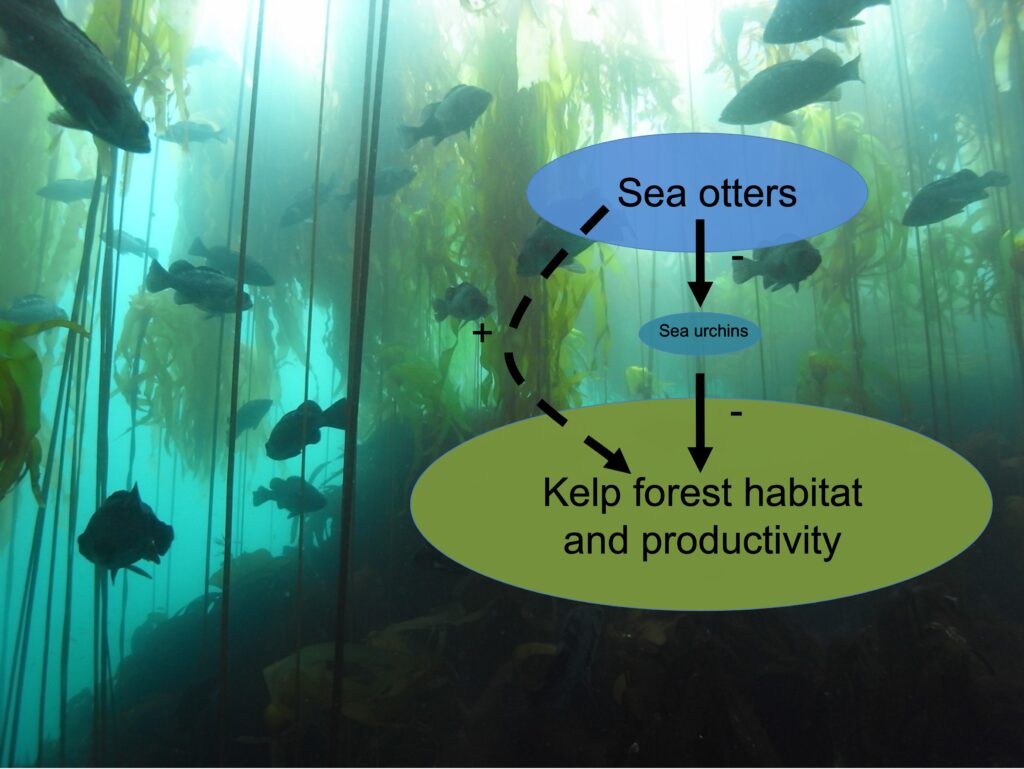
This type of ecological interaction, in which predators indirectly control the abundance of plants by directly controlling the abundance of grazers, is known as a “trophic cascade”, owing to the cascading or down-stream effects that top predators have on food webs. Trophic cascades are closely related to the “keystone species” concept, in which some species play disproportionately large roles in structuring ecological communities and ecosystems. Sea otters act as a keystone species by playing the “lead role” in the trophic cascade involving otters, urchins, and kelp forest ecosystems.
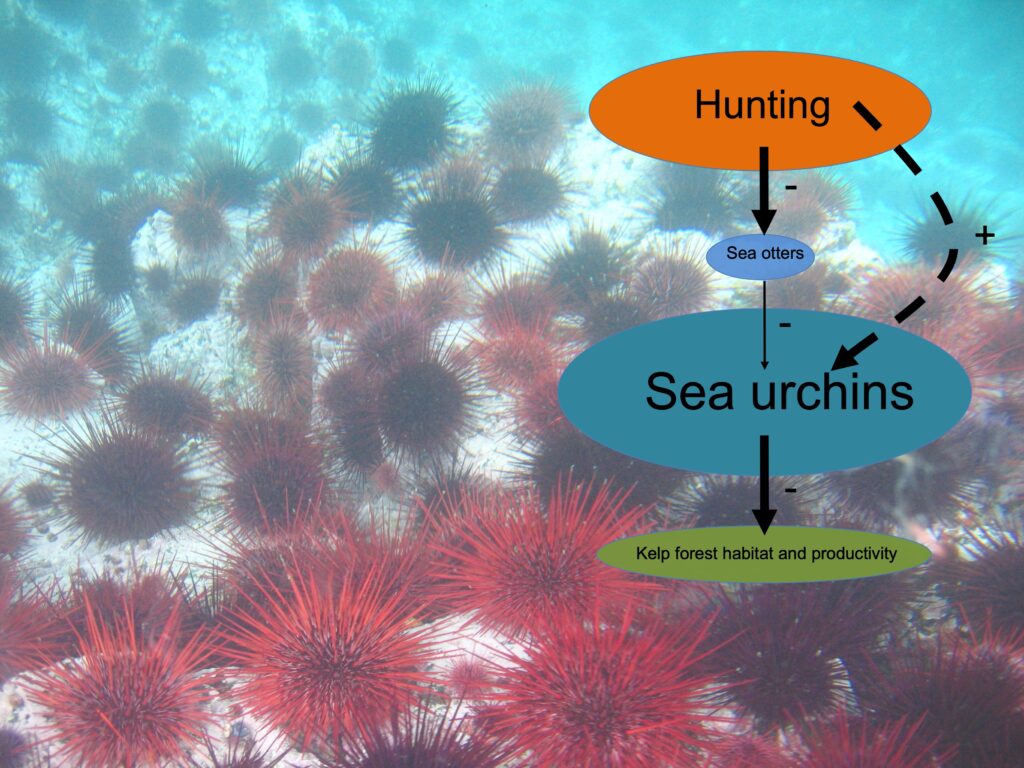
What was missing from our knowledge was the effects of the corresponding increases in kelp populations that occur following the return sea otters, especially the relationships between kelp and kelp-associated fishes, such as rockfishes, perch, salmon, and lingcod. And so, my scientific research involving numerous collaborators tackled a wide range of questions related to this topic, which I’ve described for you below.
How much larger do kelp forests become once sea otters have returned and dramatically reduced sea urchin populations?
While previous researchers had shown that kelp and other seaweeds increase dramatically following the removal sea urchins, none had documented these changes at the scale of entire kelp forests, or the number of kelp forests across nearshore seascapes. By comparing dozens of sites along the west coast of Vancouver Island, I found that, on average, giant kelp (Macrocystis pyrifera) forests are nearly 20 times larger in regions where sea otters had re-established, compared to areas where sea otters were absent. This happens because, when sea otters are absent, sea urchins severely limit the depth to which kelp forests can extend down rocky slopes, resulting in very small kelp forests. But when sea otters return and remove most of the sea urchins, kelp forests are able to quickly expand their ranges much deeper, until they either run out of adequate light for photosynthesis, or until the rocky substratum changes to gravel or sand to which kelps can’t attach themselves. As a result, the size (i.e., the surface area and volume) of kelp forests increases dramatically. The key message here is that, in the presence of sea otters, kelp forests provide approximately 20 times more habitat and primary productivity to nearshore marine systems, and support a wide range of ecologically and economically important species, including herring, salmon, and lingcod (more on this topic below).
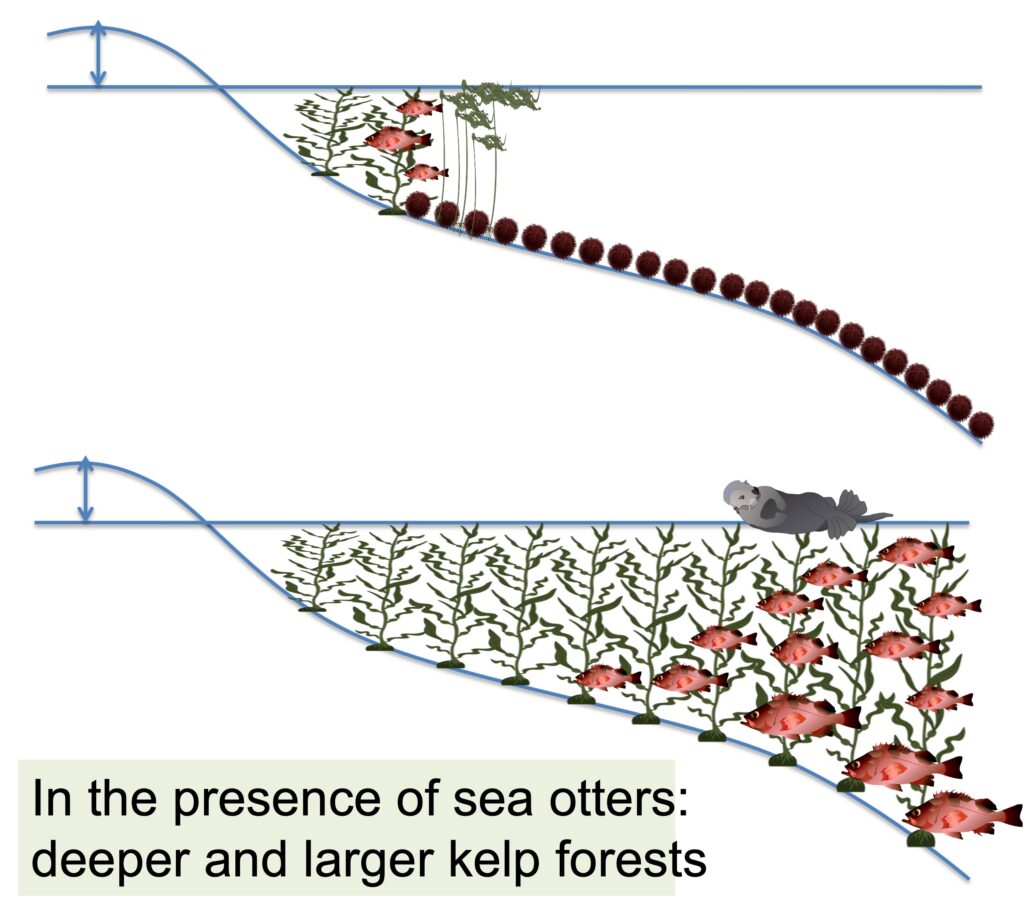
How do larger kelp forests increase fish populations?
This is a huge question, but in general, there are two main themes here. First, more kelp habitat results in more protection from predators (especially for juvenile fish), and more food that ultimately comes from kelp. For example, I found that kelp-derived carbon initially comprised less than 5% of the tissues of juvenile rockfishes; however, after spending just two to three months in these kelp forests, 80-90% of the carbon comprising these animals came from consuming zooplankton and small invertebrates that had consumed decaying and living kelp.
Rebecca Martone and I also found strong positive relationships between kelp forest size and composition, and the abundance of adult fishes, including rockfishes, perch, and kelp greenlings. Key to these relationships appears to be the fact that larger, older, and more stable kelp forests (i.e., perennial kelp forests), support more food sources for small-bodied adult fishes, especially small crabs, isopods, amphipods, and snails, all of which consume various forms of kelp. In turn, these small-bodied fishes become important food sources for large-bodied predatory fishes, especially lingcod, large rockfishes, and even halibut (we know because we analyzed their body chemistry and looked in their stomachs).
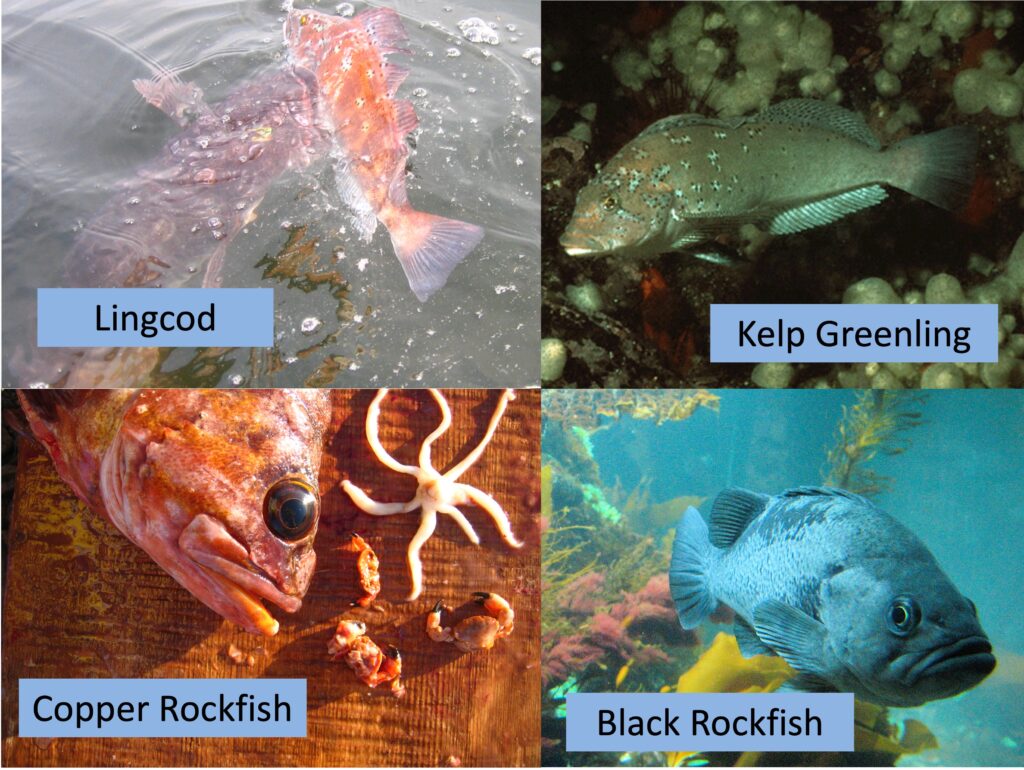
One of the most interesting results from research (at least, I think so anyway!) was my finding that adult black rockfish (Sebastes melanops) and copper rockfish (S. caurinus) living in areas where sea otters are present and kelp forests are large (very large!) both have diets that include more fish and are more specialized (i.e., consist of fewer prey items), than do their counterparts living in areas where otters are absent (or rare) and kelp forests are tiny. This strongly suggests is that large expansive kelp forests supported by the presence of sea otters support larger populations of kelp-associated fishes, which in turn allows these rockfish to include more fish (which are high in protein and fats) in their diets than invertebrates, like crabs, shrimp, and isopods, which generally have low nutritional value. And this really is a big deal, because fish that have more energy available to them enjoy higher rates of survival, growth and reproduction, and therefore more healthy and abundant populations overall.
What does all of this mean in the real (i.e., non-academic) world?
Good question! Perhaps most broadly, these findings highlight the critical roles that top predators play in maintaining healthy ecosystems. This is a pattern that’s increasingly well-documented globally, whether in kelp forests, terrestrial forests, coral reef, aquatic, or open-ocean marine ecosystems.
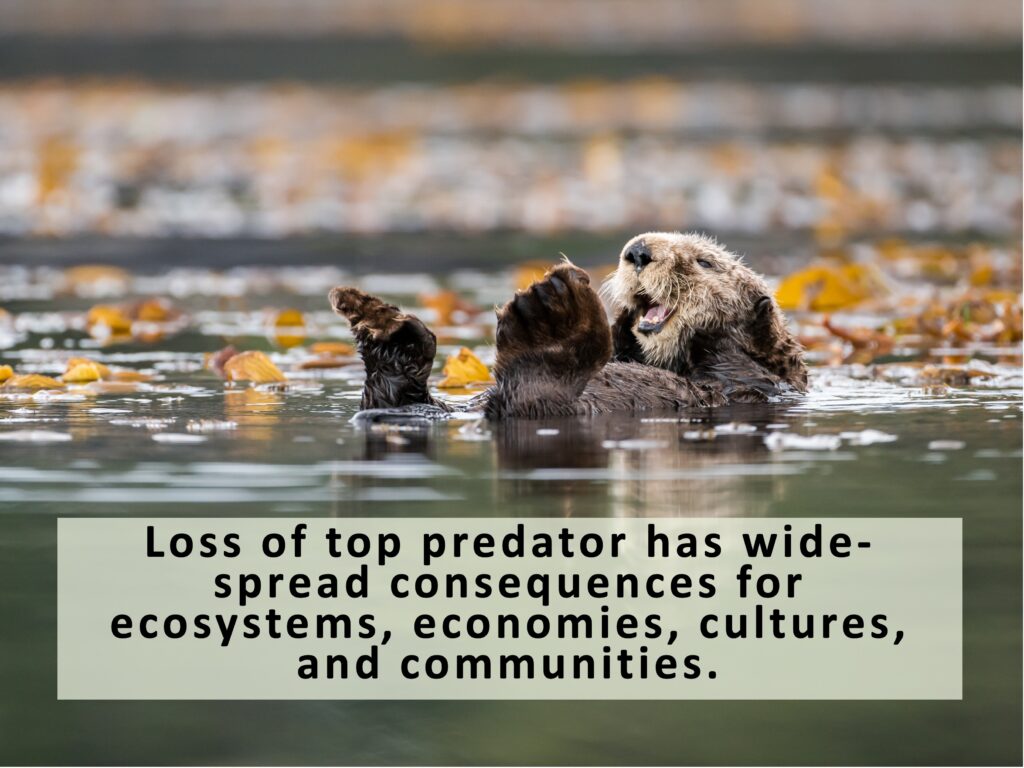
Specific to sea otters, our group of researchers at the University of British Columbia recently published a synthesis of our work that highlights several key “ecosystem services” provided by sea otters that, by definition, benefit humans in one way or another. These include, enhanced finfish fisheries (for example, salmon, lingcod, and halibut), enhanced tourism opportunities (and the associated direct and indirect economic benefits), and increased carbon sequestration (and the potential benefits associated curbing global warming).
And so, the next time time that you encounter a sea otter, or even a large raft of sea otters, I hope you’ll have a deeper understanding and appreciation of just how dramatically and extensively recovering sea otter populations are transforming the ecosystems of the BC coast.
Of course, there are many more aspects and implications to this story that are beyond the scope of a single blog post. For example, how do sea otters affect intertidal communities? And how much kelp-derived detritus do kelp forests produce, how far does it travel, and what happens to it? What I’ll also have to save for future posts is the exploitation and near extinction of sea otters as a result of the Maritime Fur Trade between ~1778 and 1911, and the deep Indigenous history and relationships among sea otters and the coastal First Nations of the Northeastern Pacific.
If you want to dig into these topics and studies I’ve described here in more detail, I’ve included a list of references for you here below, and you’re welcome to contact me with any questions or comments you may have. Thanks for your interest!
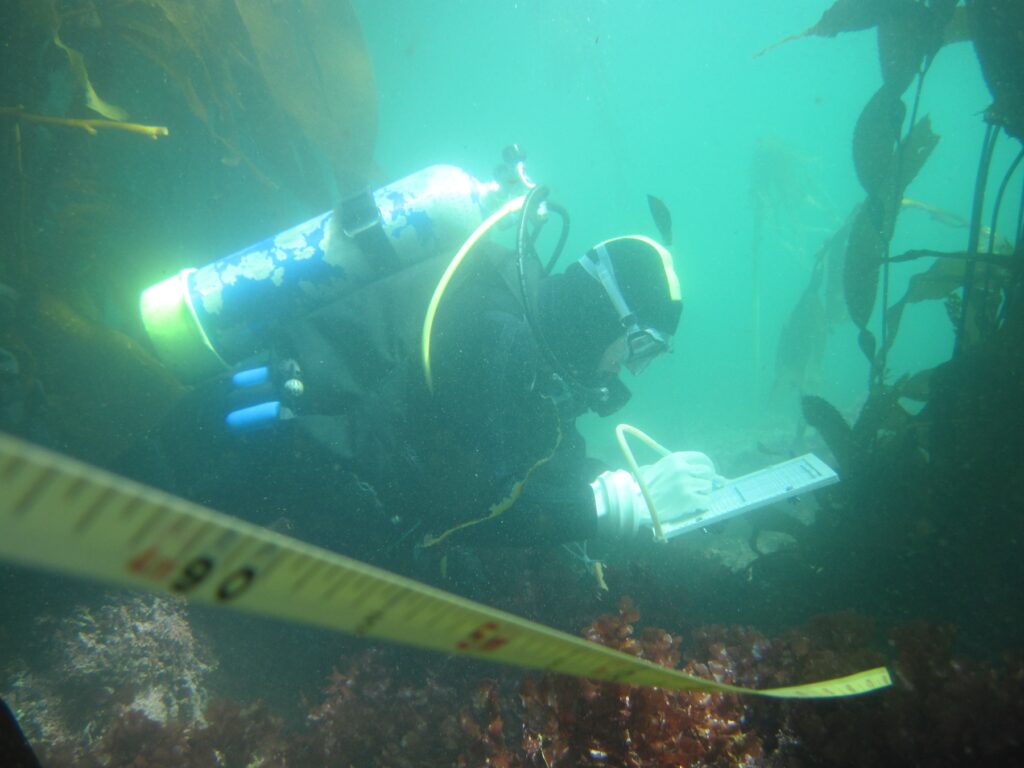
Dr. Russell Markel is the Founder and President of Outer Shores Expeditions, and the Co-Owner of Outer Shores Lodge. For comments, questions, or further information please email Russell at [email protected]
Selected References:
Greg, EJ, Christensen, V, Nichol, L, Martone RG, Markel RW, Watson JC, Christopher D. G. Harley, CDG, Pakhomov EA, Shurin JB, KMA (2020) Cascading social-ecological costs and benefits triggered by a recovering keystone predator. Science 368
Martone RG, Robin Naidoo R, Coyle T, Stelzer, B, Chan KMA (2020) Characterizing tourism benefits associated with top-predator conservation in coastal British Columbia. Aquatic Conservation 30 (6)
Markel RM and Shurin JB (2020) Contrasting effects of coastal upwelling on growth and recruitment of nearshore Pacific rockfishes (genus Sebastes). Canadian Journal of Fisheries and Aquatic Sciences 77 (6)
Ramshaw BC , Pakhomov EA, Markel RW, Kaehler S (2017) Quantifying spatial and temporal variations in phytoplankton and kelp isotopic signatures to estimate the distribution of kelp-derived detritus off the west coast of Vancouver Island, Canada. Limnology and Oceanography 62
Markel RW and Shurin JB (2015) Indirect effects of sea otters on rockfish (Sebastes spp.) in giant kelp forests. Ecology 96 (11)
Clausen JL and Shurin JB (2015) Kelp forest size alters microbial community structure and function on Vancouver Island, Canada. Ecology 9 (3)
Singh GG, Markel RW, Martone RG, Salomon AK, Harley CDG, Chan KMA (2013) Sea Otters Homogenize Mussel Beds and Reduce Habitat Provisioning in a Rocky Intertidal Ecosystem. PLOS ONE 8 (5)

